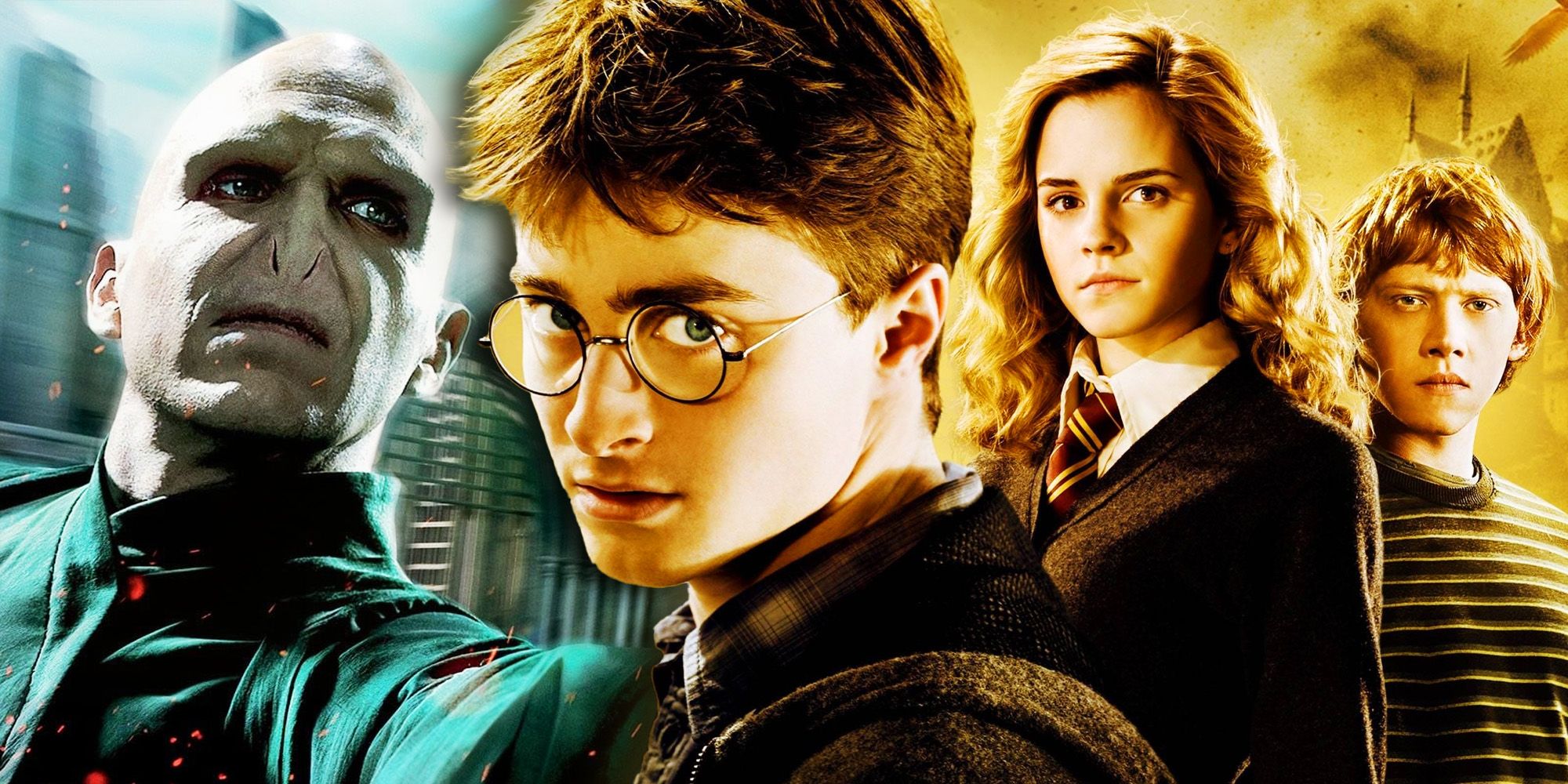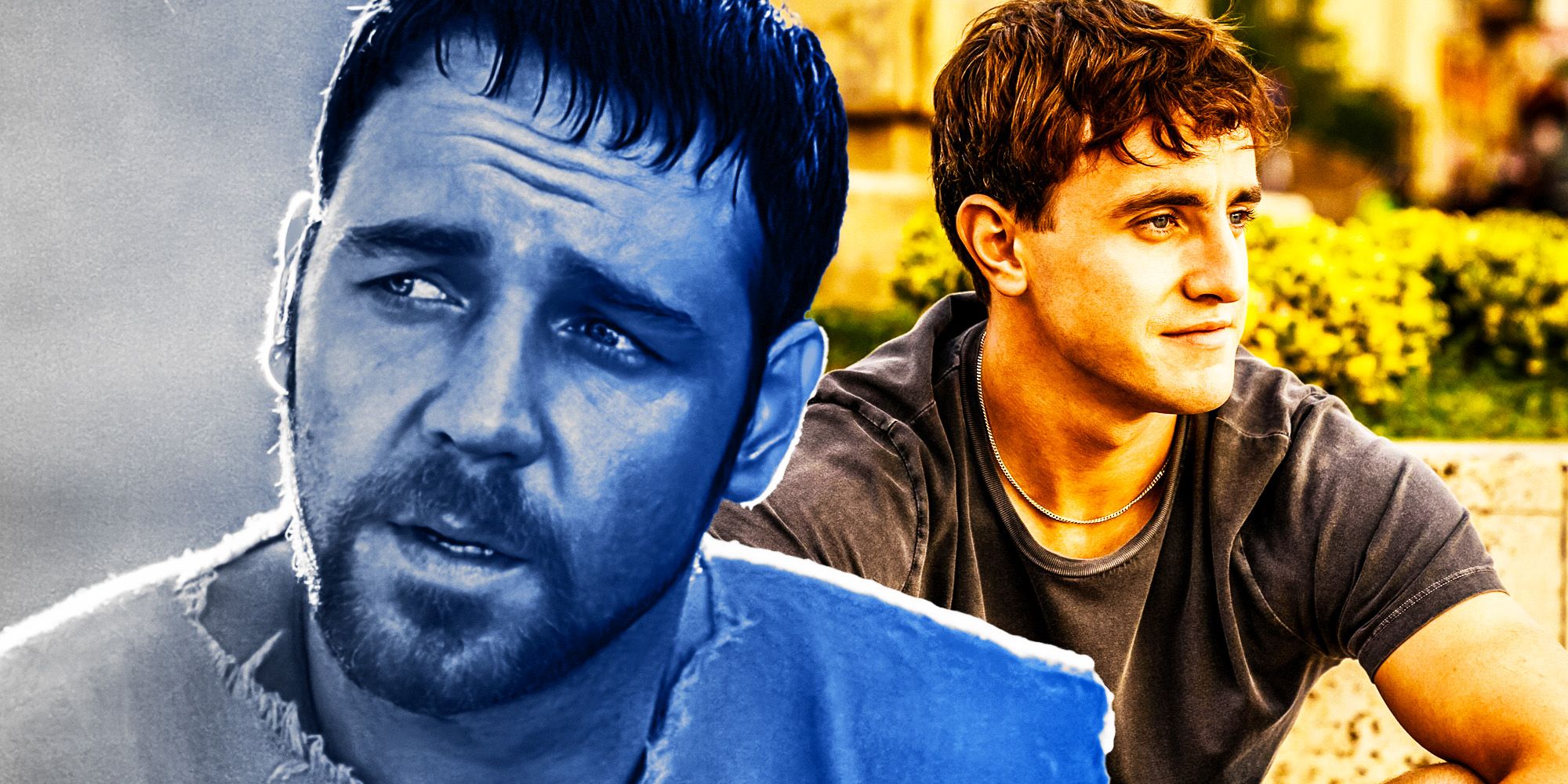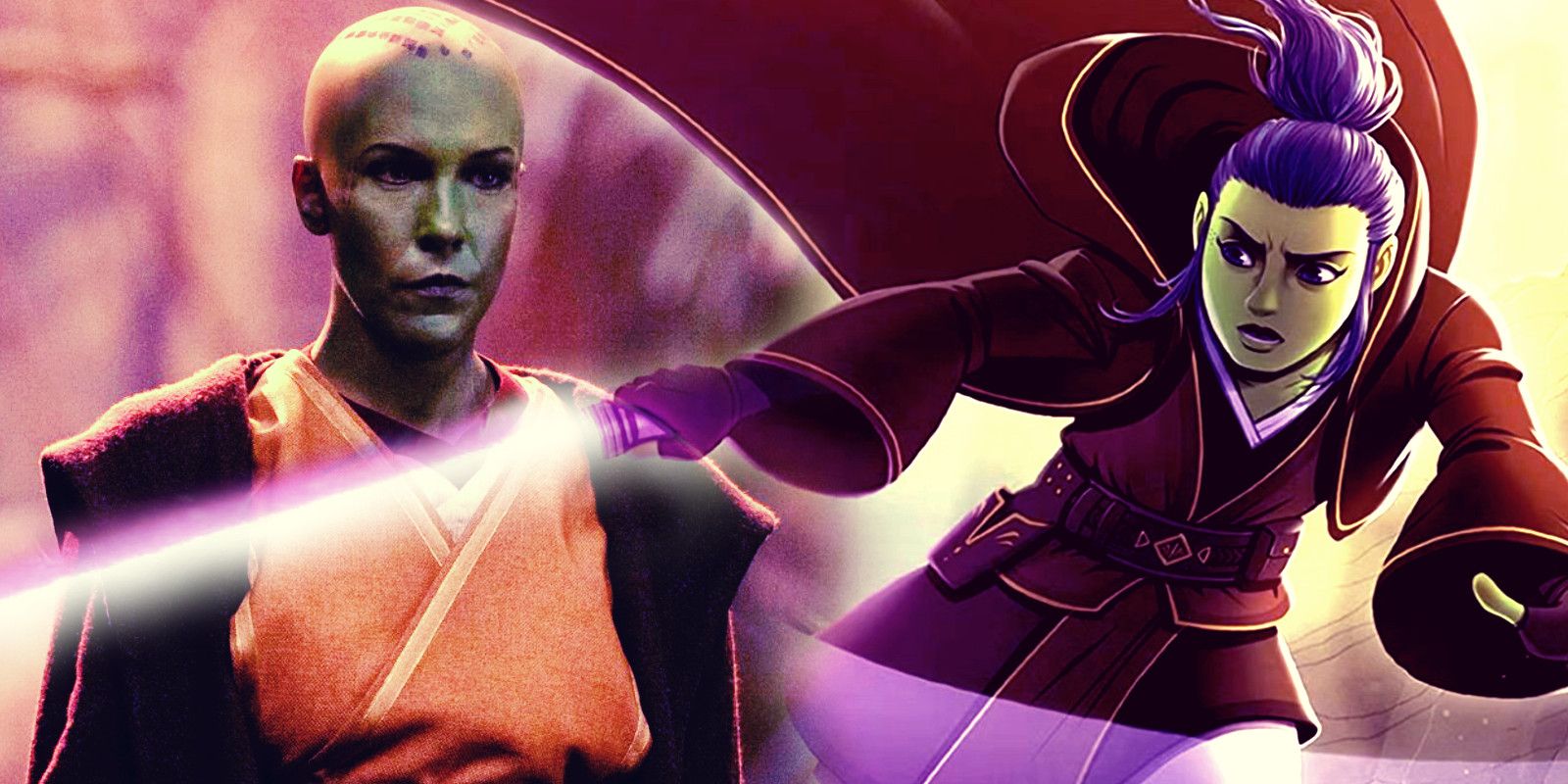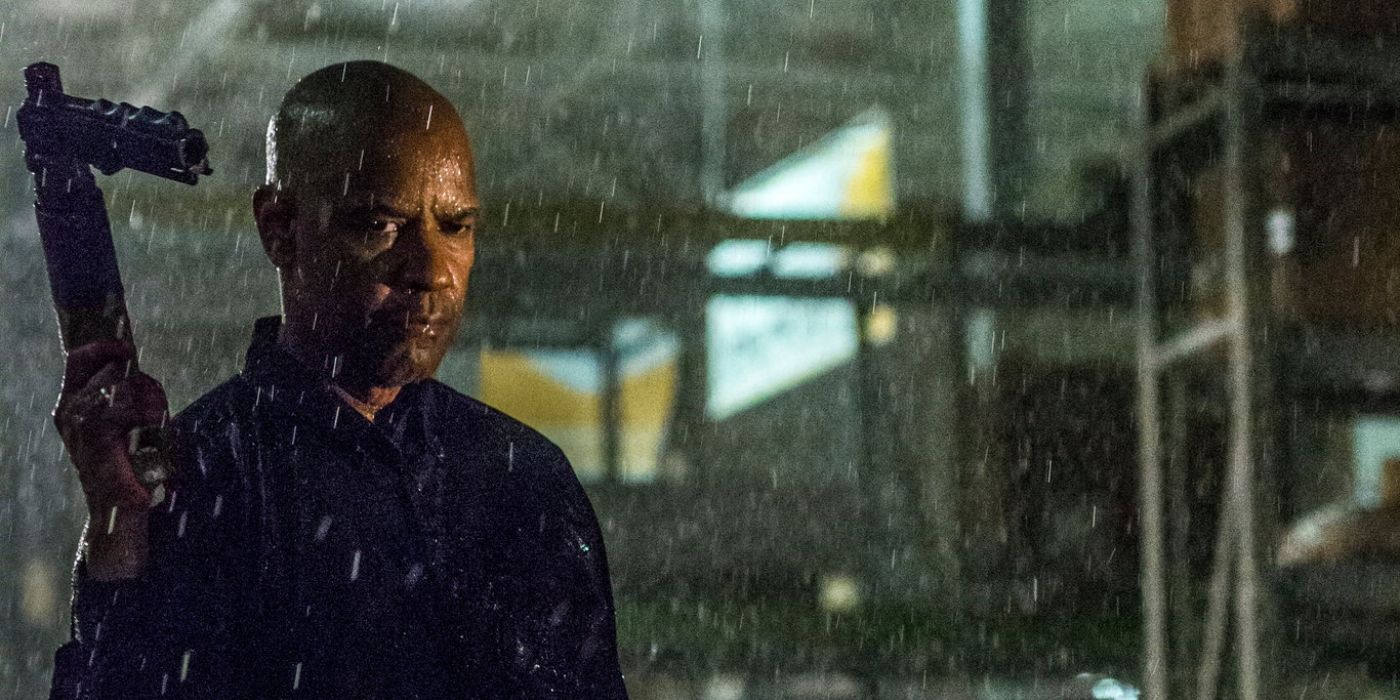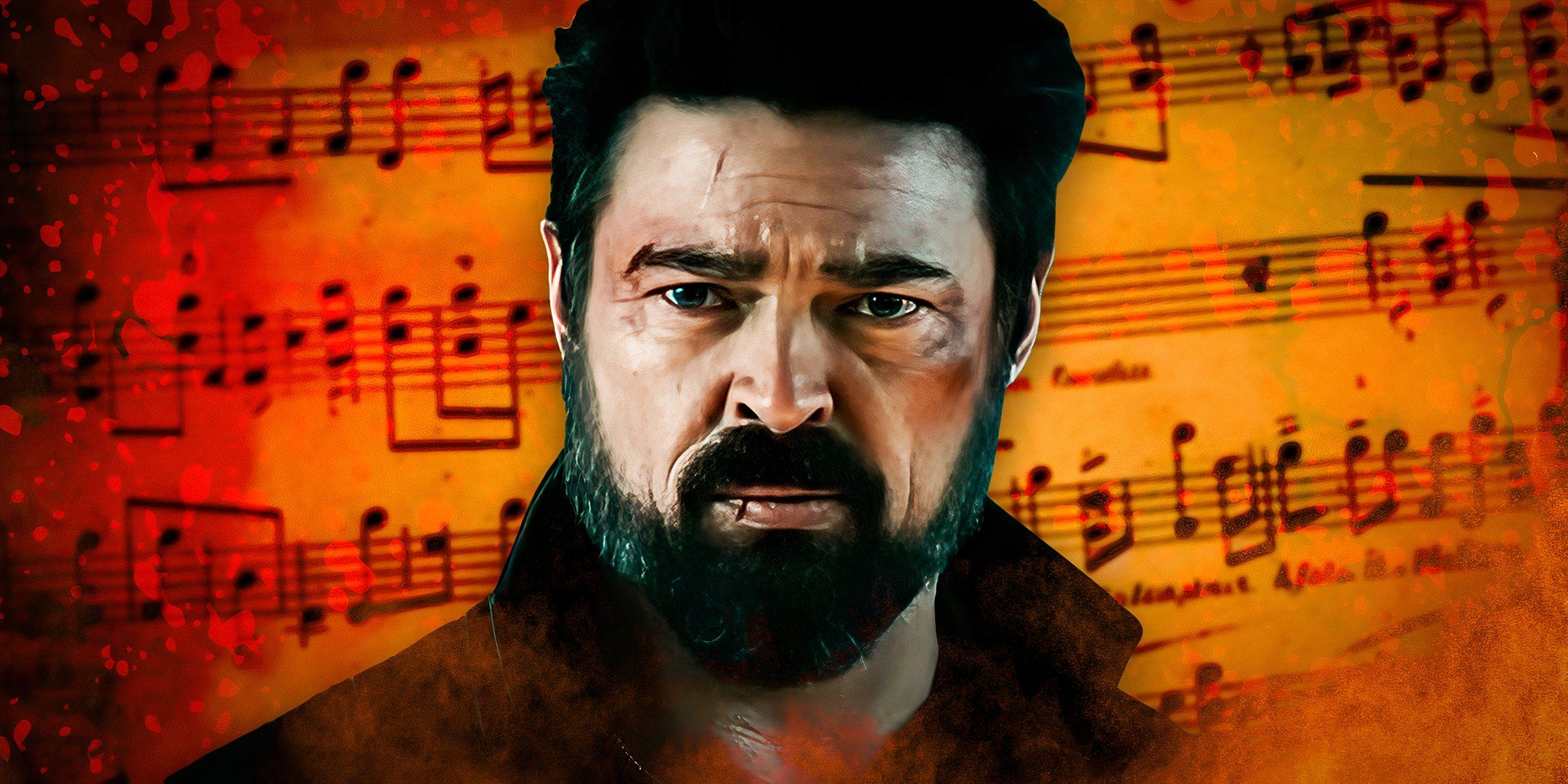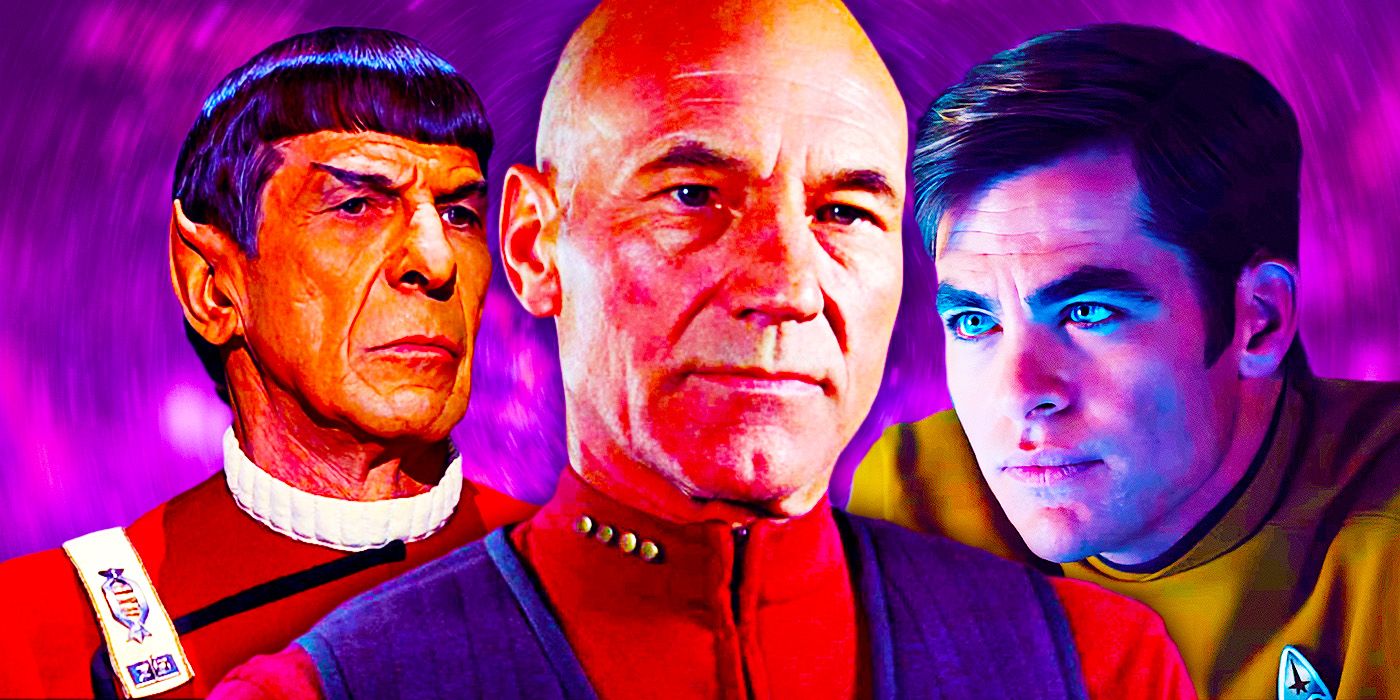The Boys is famous for taking the usual trappings of traditional superheroes and turning them on their heads, revealing the heroes who soar above us as the craven, perverted, despicable, and sometimes murderous frauds they are. But while the foul-mouthed comic and its less parodic TV adaptation are great at skewering pop-culture icons, the companies who actually created these character haven’t been afraid to experiment with their dark sides.
In fact, there are plenty of Marvel characters who take as much of a stab at the big-name icons as The Boys, and who could happily hop over into that dark and morally dubious universe without missing a step, joining the misdeeds of supes like Homelander, the Deep, and Translucent… if Billy Butcher didn’t get to them first.
Doc Justice and the J-Squad
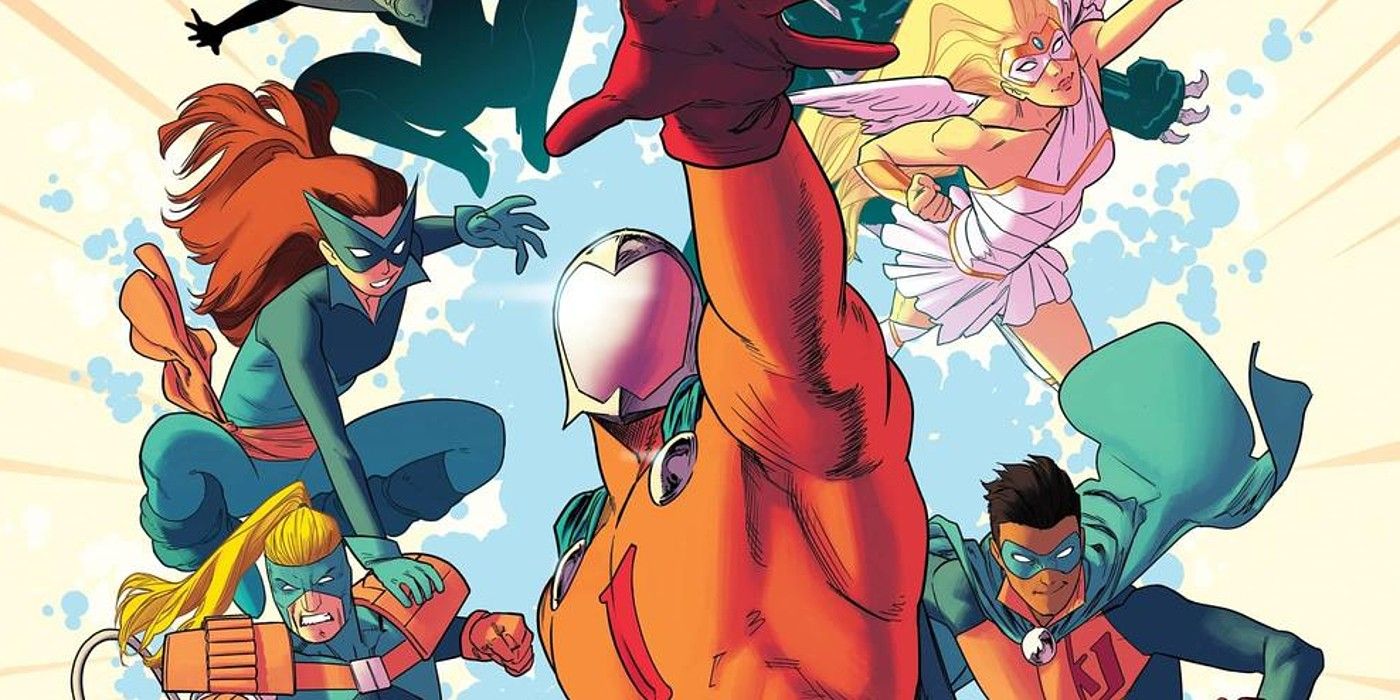
Probably the most recent hero to make the cut, Doc Justice was introduced in 2019’s Runaways vol. 5 #26 by Rainbow Rowell and Andres Genolet. Doc Justice is an established Los Angeles hero cut from the same mold as Batman, using his immense wealth and strong visual brand to keep LA safe while also profiting off his fame. What sets Doc Justice apart is his tendency to work with teams of younger heroes, and the Runaways – young heroes who discovered their parents were supervillains – joined him for months as the J-Squad before learning his dark secret.
Like the celebrity supes of The Boys, Doc Justice is a little too dependent on public opinion, and has made a habit of steering his young charges into deadly situations in order to capitalize on the publicity surrounding their deaths. Faced with the ready-made power sets and dynamics of the Runaways, Doc Justice is satisfied for a while, but when public interest drops, Doc Justice tries to murder young hero Karolina Dean and is ultimately killed by the team in turn.
Miss America, Lacuna and X-Statix
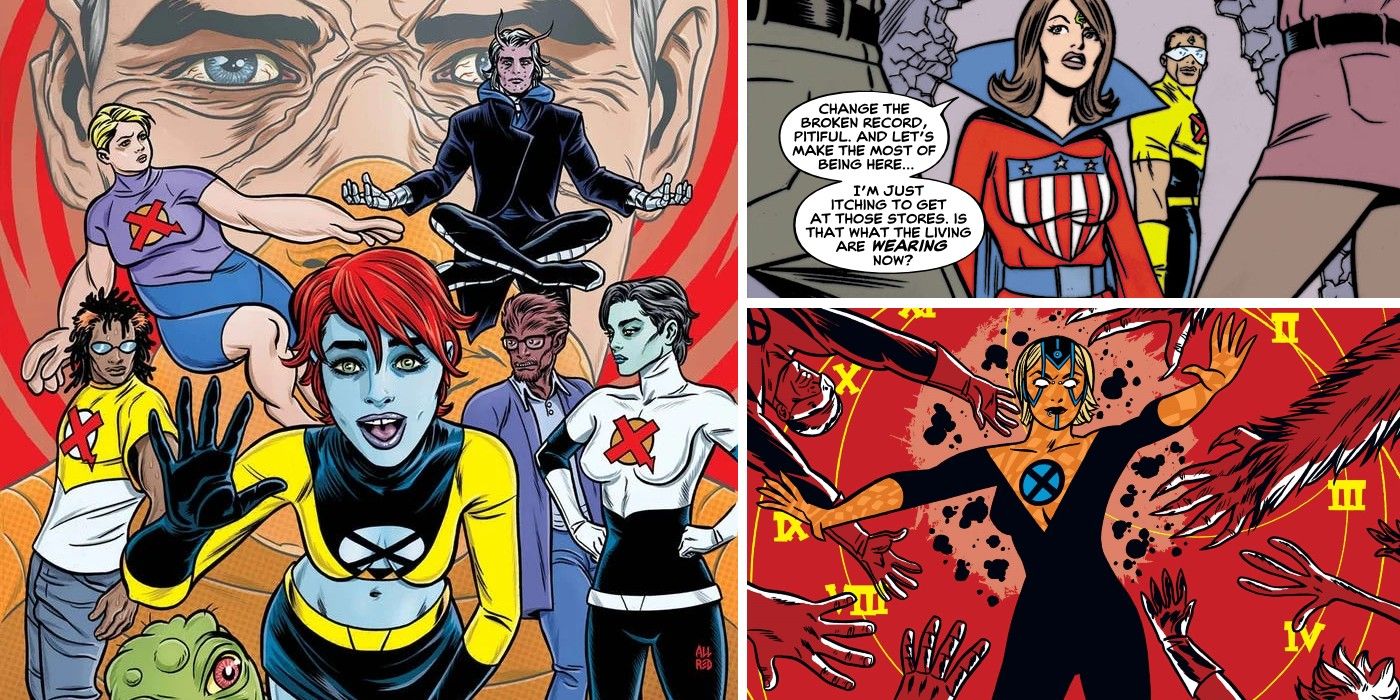
In many ways, X-Statix (formerly known as X-Force) were The Boys before The Boys. A cutting satire that conflated superhero status with celebrity, the X-Statix team went on staged missions, took copious amounts of drugs, and even committed petty crimes safe in the knowledge their fame would protect them. X-Statix dealt with the team’s struggle between true heroism and fame-chasing fakery, with focus-tested powers and padded backstories to make team members more interesting to the public. Overseen by creators Peter Milligan and Mike Allred, the series ended with a mission that might have seen the team die as true heroes… or may have been staged so they could retire with their millions. X-Statix is a cult darling, with a reported 2020 revival delayed by COVID but still on the cards.
Not technically on the team but included in their stories were Lacuna and Miss America. The former was a superhuman with the ability to stop time who ditched the team and became a gossip reporter after realizing all she really wanted out of life was to disappoint her parents. Meanwhile, Miss America was one of Marvel’s first heroines, created in 1943, but was magically resurrected in X-Statix Presents: Dead Girl with the twist that she returned with bigoted attitudes accurate to the era in which she was created. While some time in the present quickly taught her the error of her ways, Miss America acted as a critique of comics’ habit of brushing many of its characters’ most unsavory moments under the carpet like they never happened, bringing The Boys character Stormfront to mind, albeit to a much less extreme degree.
The Ultimate Defenders
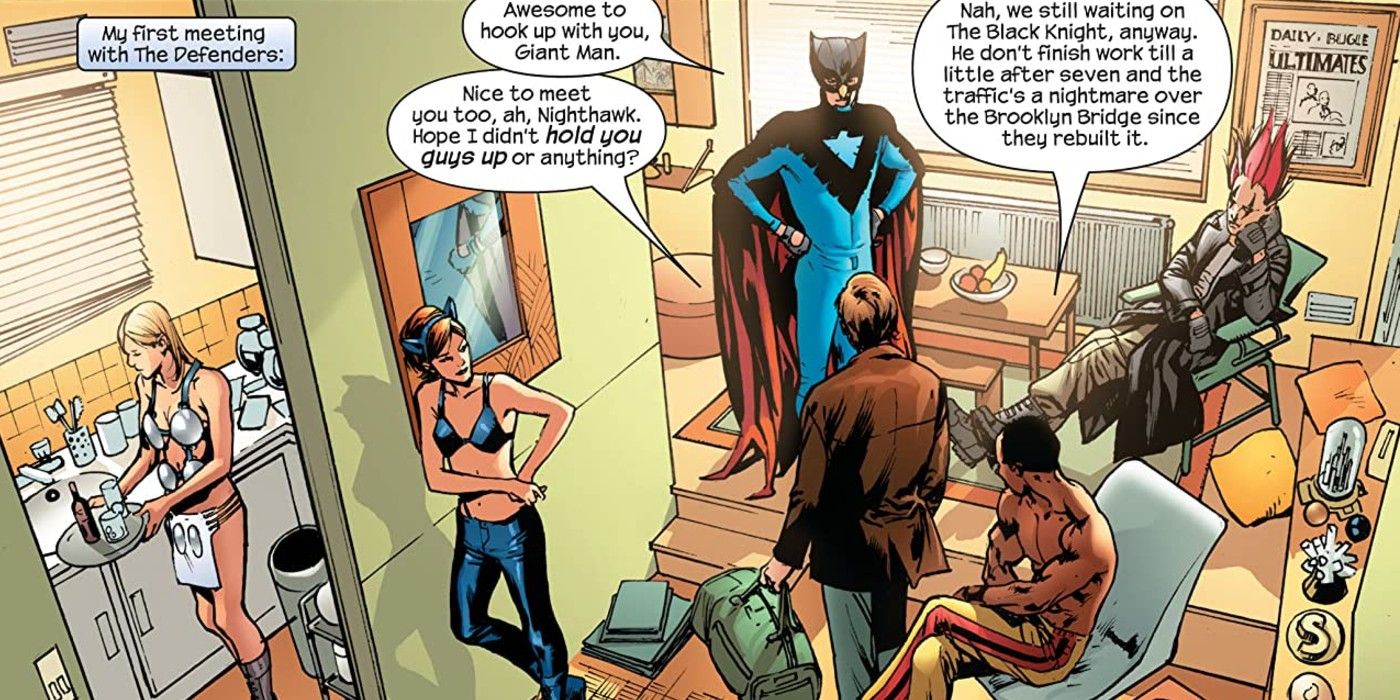
Created by Mark Millar and Bryan Hitch, this team of Defenders appeared in the Ultimate Marvel Universe, which was intended to tell contemporary stories without the restraint of established continuity. Millar’s Ultimates were dark, politically aware versions of heroes like Captain America and Giant Man, the latter portrayed as a repeat domestic abuser quickly kicked off the team.
Disgraced and disrespected, this Hank Pym accepted an invitation to join the Defenders, but when he arrived at their base he found that they were regular people without powers who had lied to get him on the team. Feeling he had no lower to fall, Giant Man joined the team and began a relationship with the naive Valkyrie, ultimately landing in legal trouble for using his remaining powers to fight crime when they were technically still government property. While later writers gave the team powers, their poseur status and reckless optimism makes them a shoo-in for Garth Ennis’ dark parody.
Grasshopper (but not the Great Lakes Avengers/X-Men/Defenders)
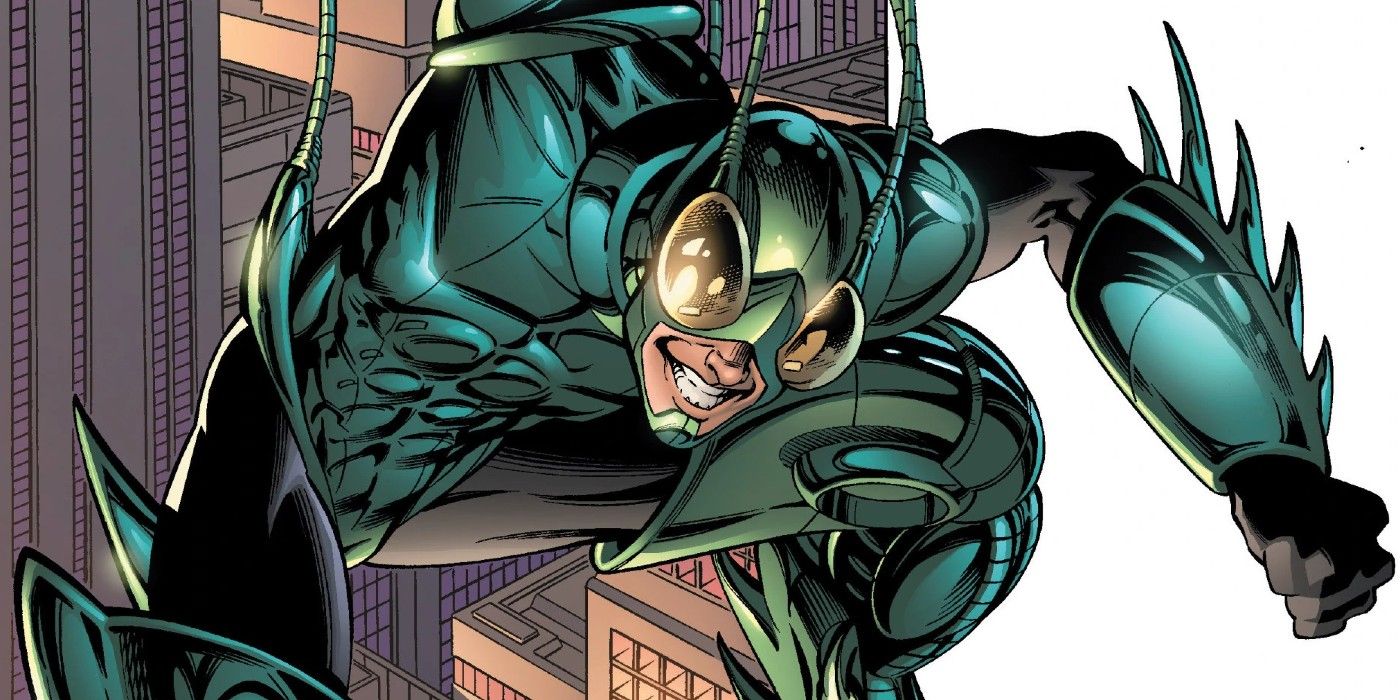
The Great Lakes Avengers are a team of superheroes who appear zany on the surface, but whose powers tend to be related to themes of mental health and personal wellbeing. Ultimately hopeful and heroic, they don’t quite belong alongside the supes of The Boys, all except for Grasshopper, who is more of a running joke than a true member. The Grasshopper armor is an enhancile suit similar to Iron Man’s, but one which tends to get its wearer killed. To date, there have been four Grasshoppers, each generally killed in the same issue in which they’re introduced. One Grasshopper set the record for shortest time on a super-team before death: 5.8 seconds.
Alpha
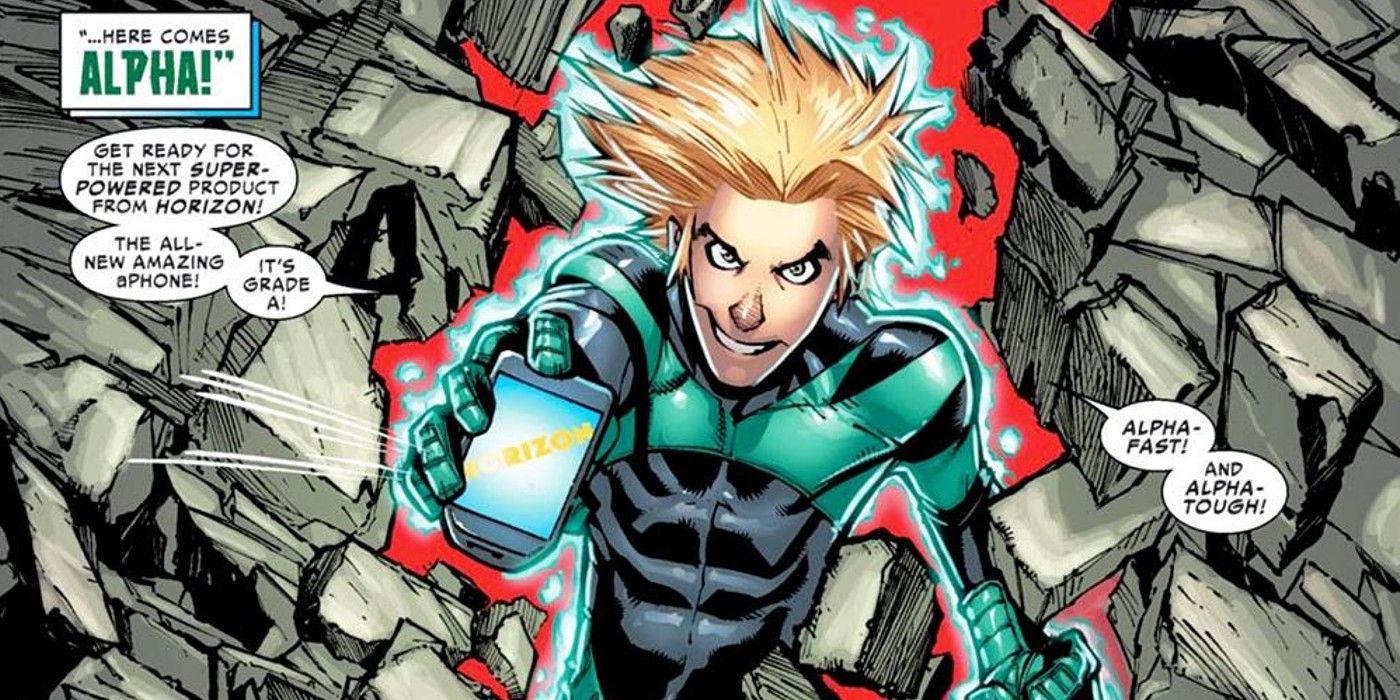
A dark parody of Spider-Man, Andrew Maguire was given incredible powers when a science experiment carried out by Peter Parker went wrong. The twist? Unlike a young Peter Parker, Andrew is a jerk – not initially evil, but the kind of person who shouldn’t be given power because he’s not prepared to take any responsibility. After trying to help Andrew adjust, Spider-Man eventually took his powers away, though they were later returned, with Alpha becoming a lethal hero blackmailed over his misdeeds to allow certain criminals free rein.
The Irredeemable Ant-Man
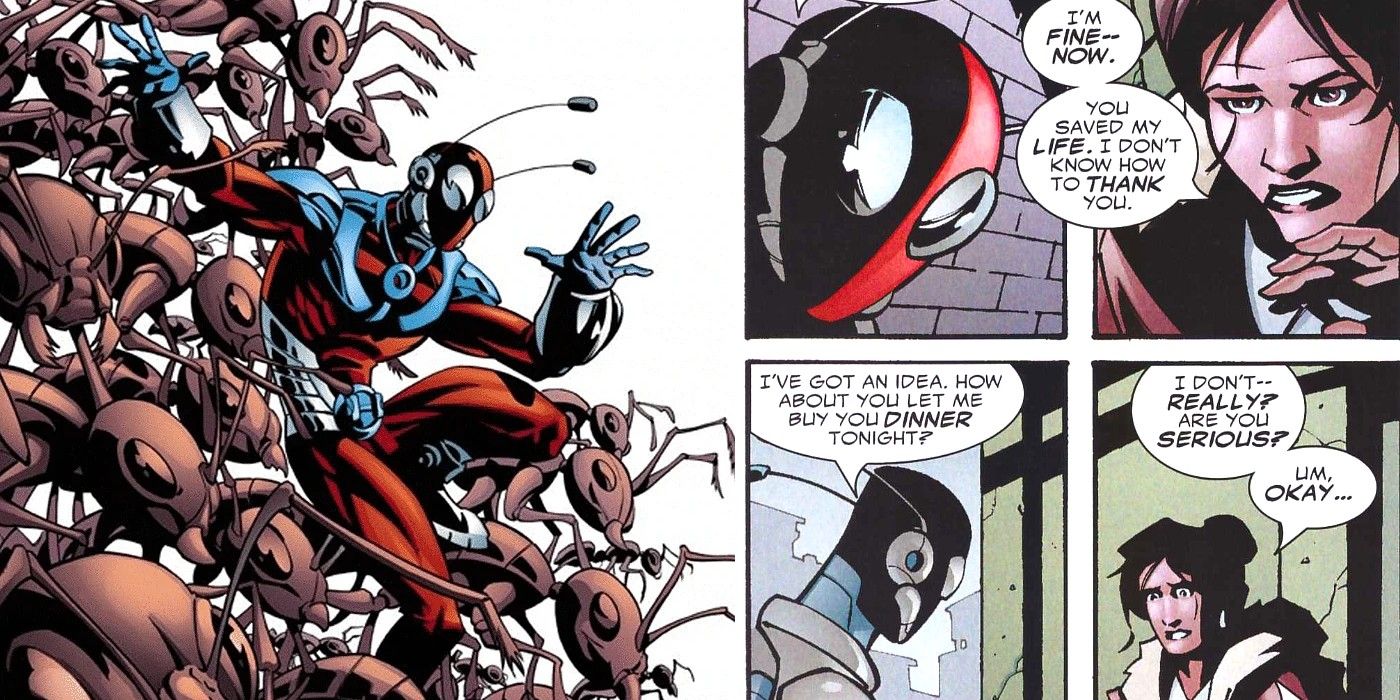
Created by Robert Kirkman and Phil Hester, Eric O’Grady was a former SHIELD agent who stole the Ant-Man armor and took on a life of casual theft and reluctant heroism. Intended as a genuinely deplorable “hero,” the Irredeemable Ant-Man was a burglar and Peeping Tom – a gag that was misjudged back in 2006 and hasn’t aged well – who undercut classic redemption narratives, choosing to hide during fights and ignore criminal activity. Killed while saving civilians as a Secret Avenger, O’Grady was resurrected as a robotic “Descendant,” taking away the unexpected lesson that it really hadn’t been worth dying for a good cause, and returning to a life of villainy as the Black Ant.
Ultimate Hawk-Owl & Marville‘s Iron Man and Black Panther
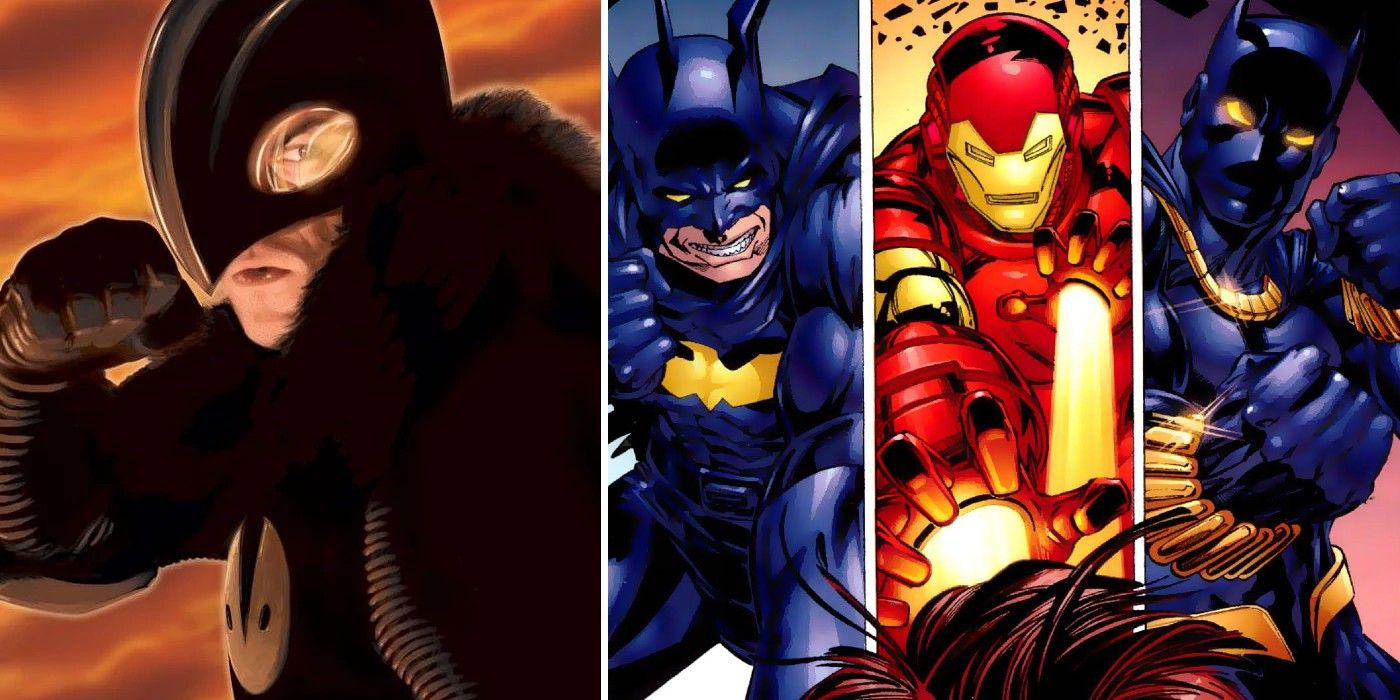
Something of a vanity project for writer Bill Jemas, Marville is generally remembered as one of the worst comics Marvel ever published. Intended as a satire of superhero comics where Marvel could poke fun at both itself and DC, Marville reimagined Iron Man, Black Panther, and a parodic Batman stand-in as disaffected billionaires eager to use lethal force on petty thieves and their critics. Dated even at the time it was written, the heroes’ misbehavior is reminiscent of The Boys’ villains at their worst.
Something of a sibling to Marville, Ultimate Adventures introduced the Ultimate Marvel hero Hawk-Owl. Like Marville, the comic was published as part of the “U-Decide” campaign, in which only one of three newly launched books would continue its run based on fan votes. Set in the Ultimate Universe, the comic offered up a satirical version of Batman and Robin in Hawk-Owl and Woody – a rich vigilante and his streetwise ward. While the series poked fun at the campy themes and convoluted plots of classic Batman stories, the core of its satire was that the titular Hawk-Owl wasn’t a hero born out of tragedy, but just a person who decided to do the right thing. The tone and satirical intent were there, but like the early The Boys character Tek-Knight, Hawk-Owl was a relatively well-meaning hero using his resources to do some good in a world of superpowers.
Iron Patriot, American Son and (some of) the Dark Avengers
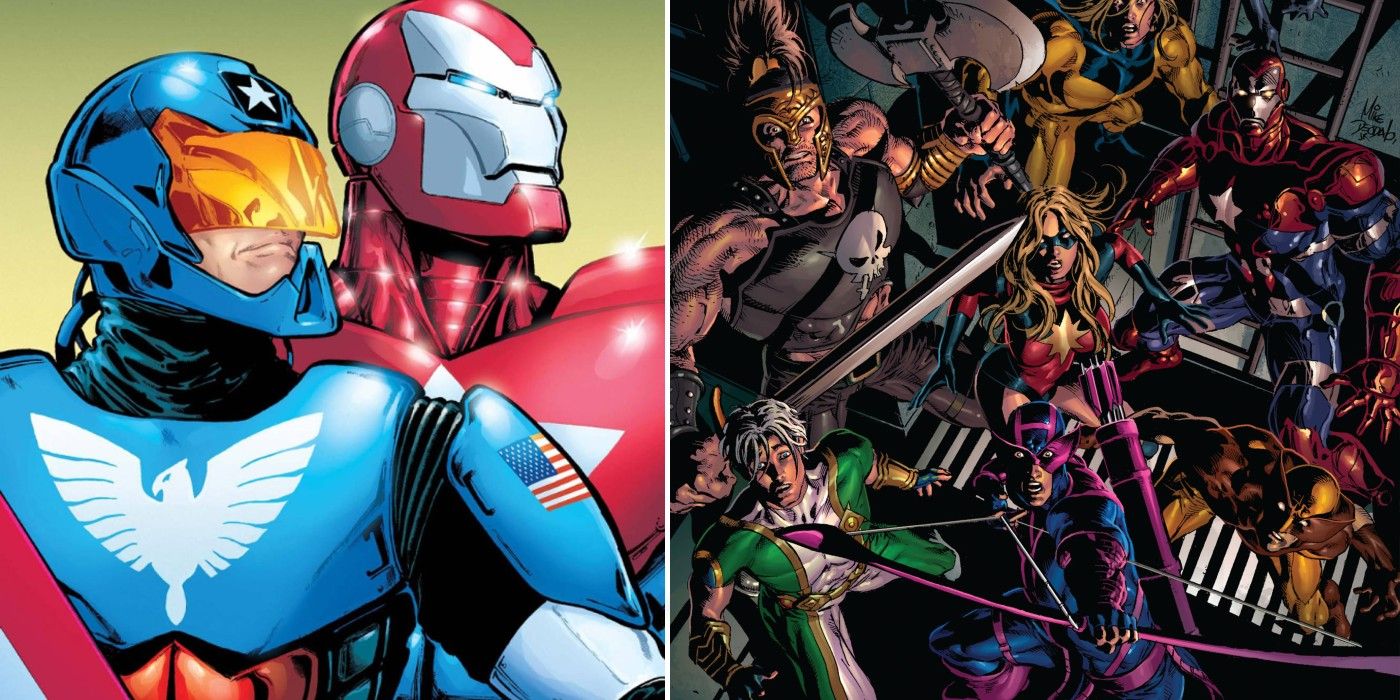
Though the armor has grown more complex in meaning since its introduction in Brian Michael Bendis and Mike Deodato’s Dark Avengers #1, the armor and persona of the Iron Patriot were initially adopted by former super-villain Norman Osborn in an attempt to win public trust. Gaudily jingoistic, the Iron Patriot armor is intended to evoke the visual style of Captain America and Iron Man while still feeling like a hollow pretense at heroism. Osborn would later go on to develop the American Son armor, which he intended to be worn by his son Harry, who ultimately rebelled.
Corporate and nepotistic, the Iron Patriot armor was a superhero persona designed by committee – exactly the kind of hero who’d make sense for Vought-American to fabricate in order to cover up releasing a psychopath like Norman Osborn on the public. Of course, Norman Osborn’s Dark Avengers were also truly diabolical “heroes,” though not all of them qualify. Bullseye, Daken, Moonstone, and Venom (who dressed up as heroes Hawkeye, Wolverine, Ms. Marvel, and Spider-Man for Osborn’s team) were depraved villains who used fame to commit dastardly deeds, but Ares, Sentry, and Marvel Boy don’t quite make the cut, since they were sincerely committed to doing good (as they saw it.)
The Squadron Supreme
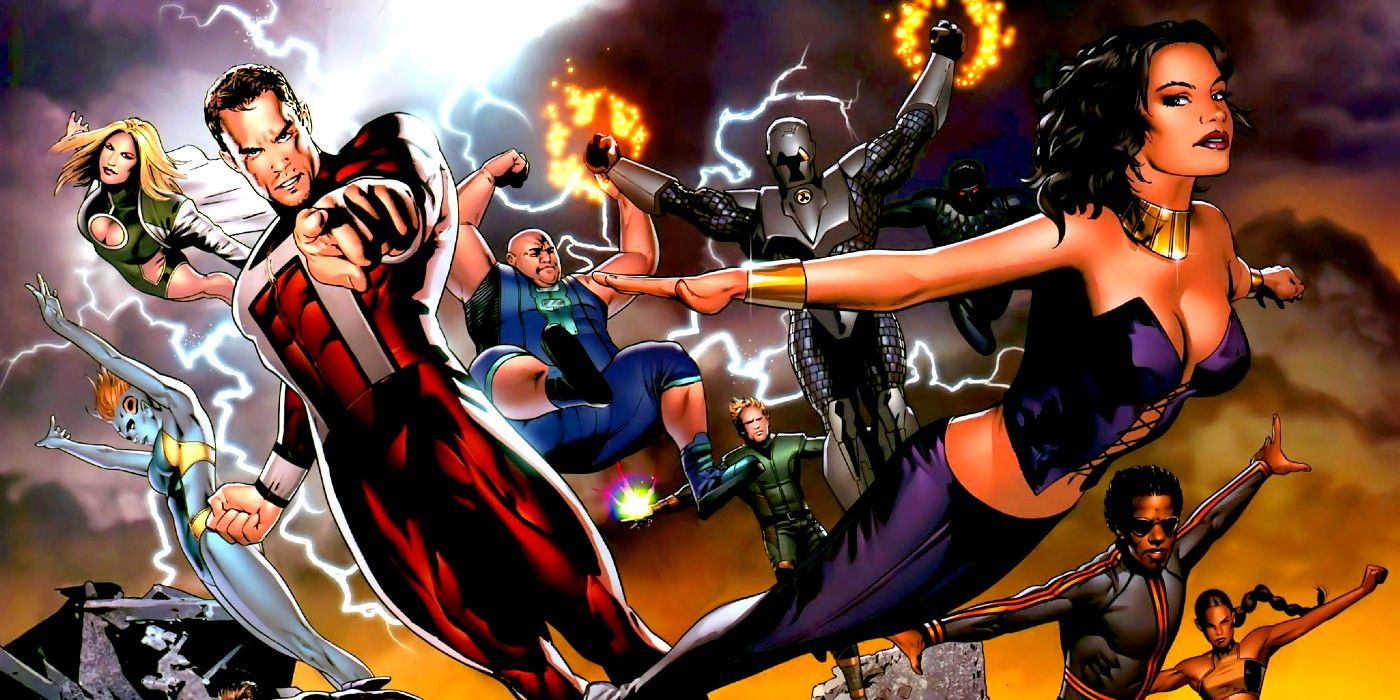
There have been many Squadron Supremes in Marvel comics, but not all of them fit the bill for a transfer to the universe of The Boys. Designed as a deliberate pastiche of the Justice League, the team have enjoyed a long comics history, but Marvel’s mature-audience MAX imprint saw Supreme Power characters like Hyperion, Nighthawk, Doctor Spectrum, and Princess Zarda slowly realize there was no reason they shouldn’t simply seize control of their world for its own good. Absent a team like the Boys to fight back, Hyperion surpassed Homelander’s wildest dreams and took over the world, creating a new status quo in which these dark reflections of DC’s greatest heroes did whatever they wanted, ultimately answering to nobody but each other.
The Boys was nowhere near the first comic to criticize the powerful figures traditional superhero stories tend to venerate, though it certainly did so with more bombast than any series that had come before. But while series like Marville and Ultimate Adventures feel misjudged and toothless in retrospect, there’s something special to be said for comics like X-Statix and Runaways which imagine corrupt or dangerous superheroes in the context of a world which has good reason to trust them. The characters above would fit into the world of The Boys, but the best among them bring a little slice of that darkness into the Marvel universe, making their excesses all the more horrifying by contrast.
